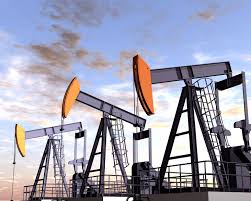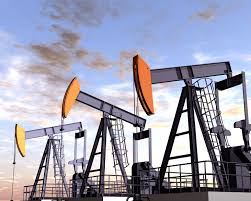
Even as OPEC battles to agree on its first production cut since 2008, data has shown that during one of the worst downturns for the global oil industry, the world's listed oil companies have slashed oil output by 2.4 percent so far this year.
Data provided by Morgan Stanley showed that in the third quarter of 2016 there was a fall by 838,000 barrels per day from a year earlier to 33.88 million bpd in the aggregated production of 109 listed companies that produce more than a third of the world's oil. 33.64 million bpd in October was produced by the Organization of the Petroleum Exporting Countries in comparison.
Before its Nov. 30 meeting in Vienna, OPEC has struggled to agree on a joint production freeze or to cut support oil prices.
The companies reduced production by nearly 930,000 bpd in the second quarter of 2016, according to Morgan Stanley.
In addition to U.S. shale oil producers like EOG Resources and Occidental Petroleum, b international producers such as Exxon Mobil and Royal Dutch Shell and national oil champions of China, Russia and Brazil, are included in the list of such firms.
Given the increase in 2015, when third-quarter production rose by some 1.9 million bpd, the drop in oil companies' output is particularly compelling.
"Clearly, we have seen a large swing in the year-on-year trend in production, from strong growth as recent as a year ago, now to steep decline. This is the outcome of the strong cutbacks in investment," Morgan Stanley equity analyst Martijn Rats said.
According to Rats, there has been a fall of nearly 50 percent from $136 billion in the third quarter of 2014 to $58 billion in the same period this year in the combined capital expenditure of the companies.
A sharp drop in global investment in oil and gas would result in a supply shortage by the end of the decade, oil executives and the International Energy Agency have warned.
It typically takes three to five years and billions in investment to develop large oilfields, such as deepwater developments off the coasts of the United States, Brazil, Africa and Southeast Asia.
The drop in production as a result of the lower investment have been only partly offset by cost reductions and increased efficiencies. Onshore U.S shale production has also been helped to get a boost due to technological advancements.
"These declines should temporarily soften in 2017 as new fields are coming on-stream in Canada, Brazil, the former Soviet Union and U.S. tight oil probably stabilizes. Still, unless investment rebounds relatively soon, this steep downward trend is likely to resume in 2018 and beyond," Rats said.
(Source:www.reuters.com)
Data provided by Morgan Stanley showed that in the third quarter of 2016 there was a fall by 838,000 barrels per day from a year earlier to 33.88 million bpd in the aggregated production of 109 listed companies that produce more than a third of the world's oil. 33.64 million bpd in October was produced by the Organization of the Petroleum Exporting Countries in comparison.
Before its Nov. 30 meeting in Vienna, OPEC has struggled to agree on a joint production freeze or to cut support oil prices.
The companies reduced production by nearly 930,000 bpd in the second quarter of 2016, according to Morgan Stanley.
In addition to U.S. shale oil producers like EOG Resources and Occidental Petroleum, b international producers such as Exxon Mobil and Royal Dutch Shell and national oil champions of China, Russia and Brazil, are included in the list of such firms.
Given the increase in 2015, when third-quarter production rose by some 1.9 million bpd, the drop in oil companies' output is particularly compelling.
"Clearly, we have seen a large swing in the year-on-year trend in production, from strong growth as recent as a year ago, now to steep decline. This is the outcome of the strong cutbacks in investment," Morgan Stanley equity analyst Martijn Rats said.
According to Rats, there has been a fall of nearly 50 percent from $136 billion in the third quarter of 2014 to $58 billion in the same period this year in the combined capital expenditure of the companies.
A sharp drop in global investment in oil and gas would result in a supply shortage by the end of the decade, oil executives and the International Energy Agency have warned.
It typically takes three to five years and billions in investment to develop large oilfields, such as deepwater developments off the coasts of the United States, Brazil, Africa and Southeast Asia.
The drop in production as a result of the lower investment have been only partly offset by cost reductions and increased efficiencies. Onshore U.S shale production has also been helped to get a boost due to technological advancements.
"These declines should temporarily soften in 2017 as new fields are coming on-stream in Canada, Brazil, the former Soviet Union and U.S. tight oil probably stabilizes. Still, unless investment rebounds relatively soon, this steep downward trend is likely to resume in 2018 and beyond," Rats said.
(Source:www.reuters.com)














